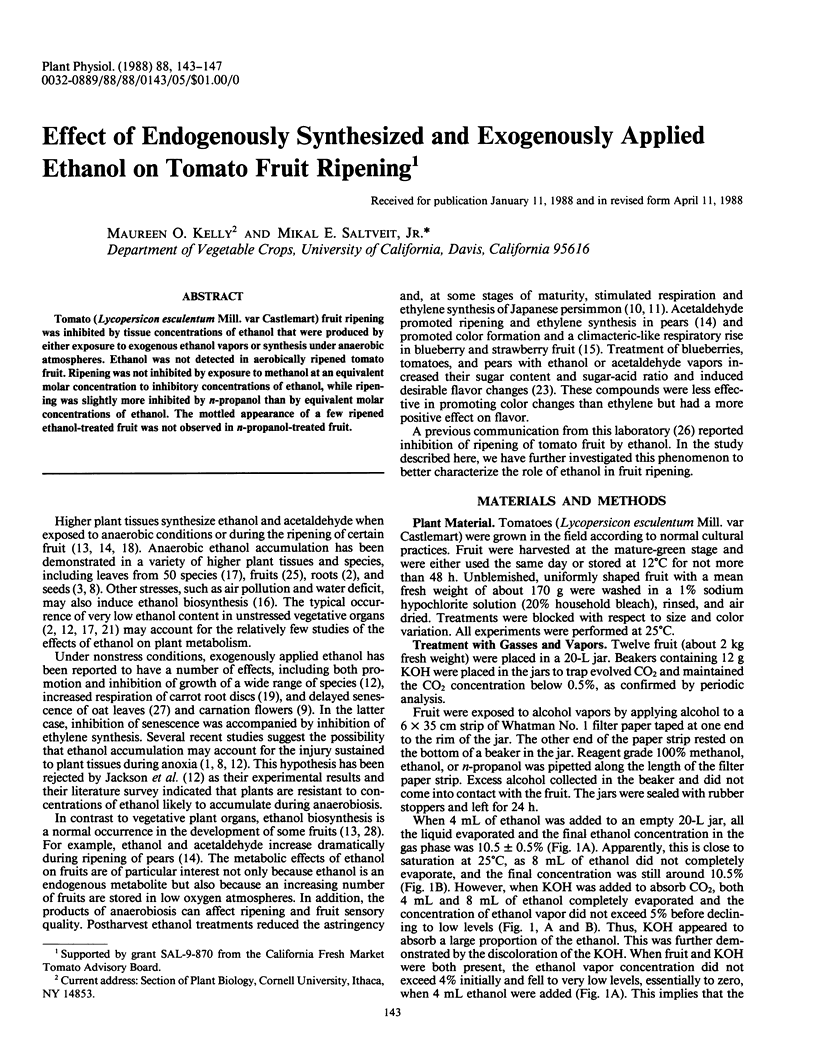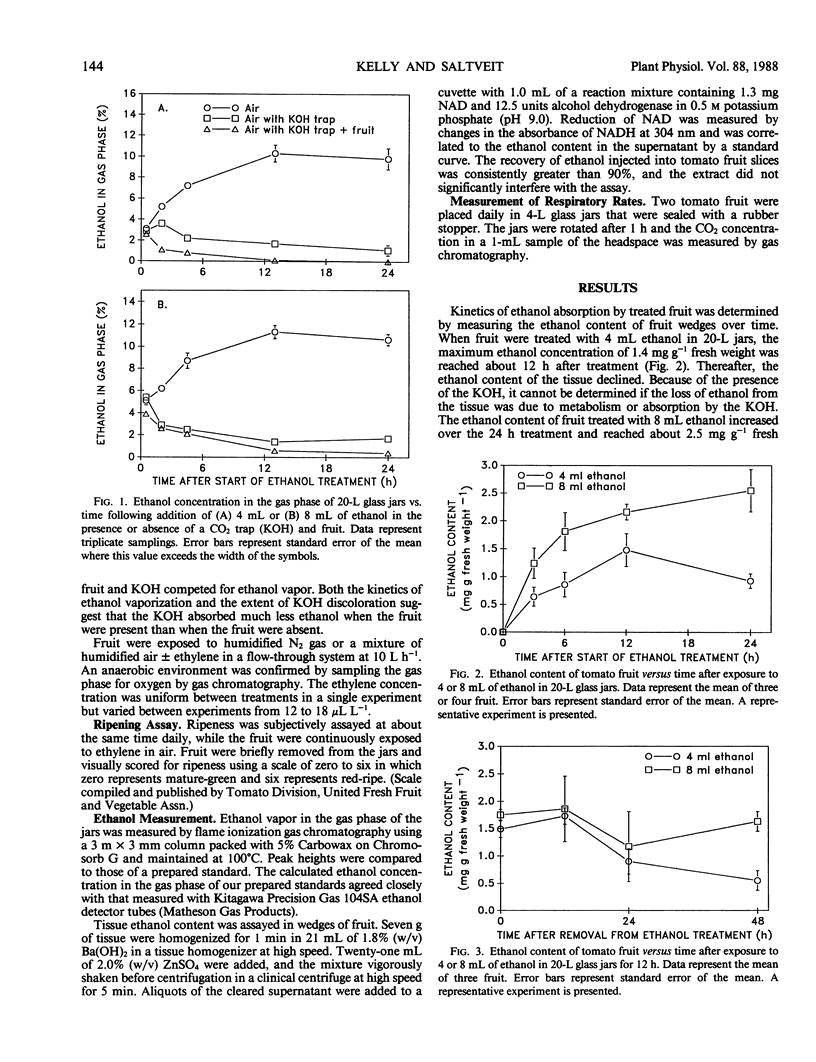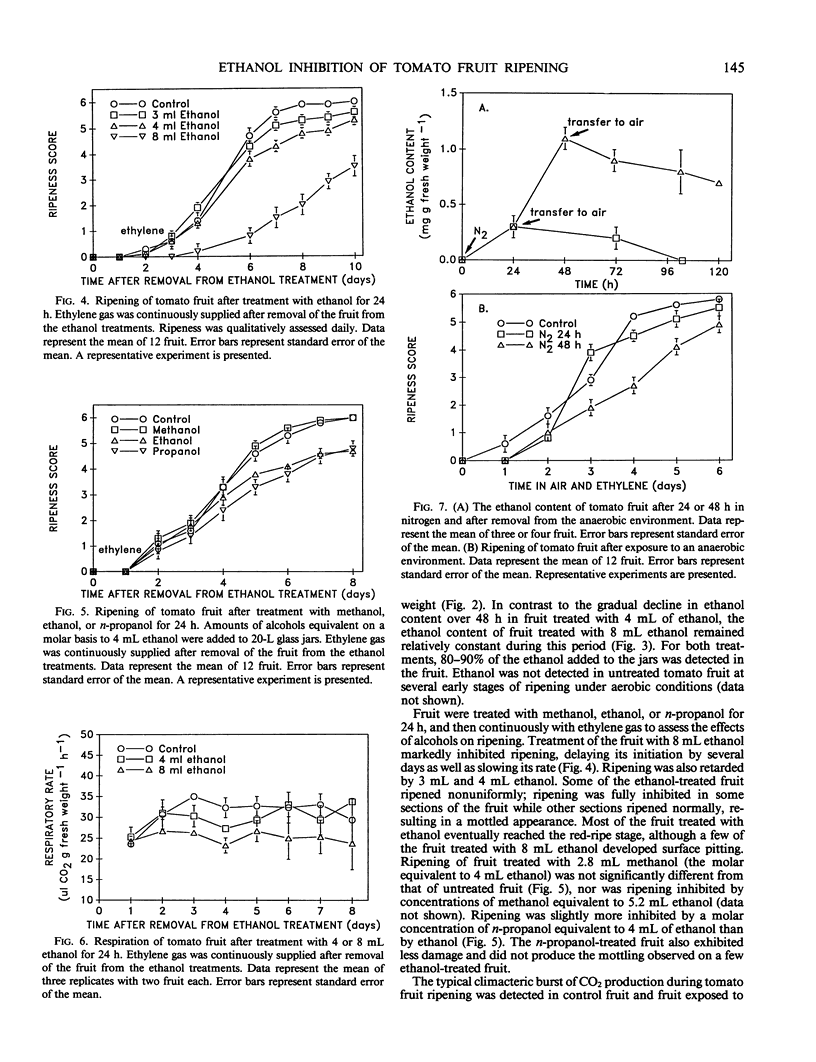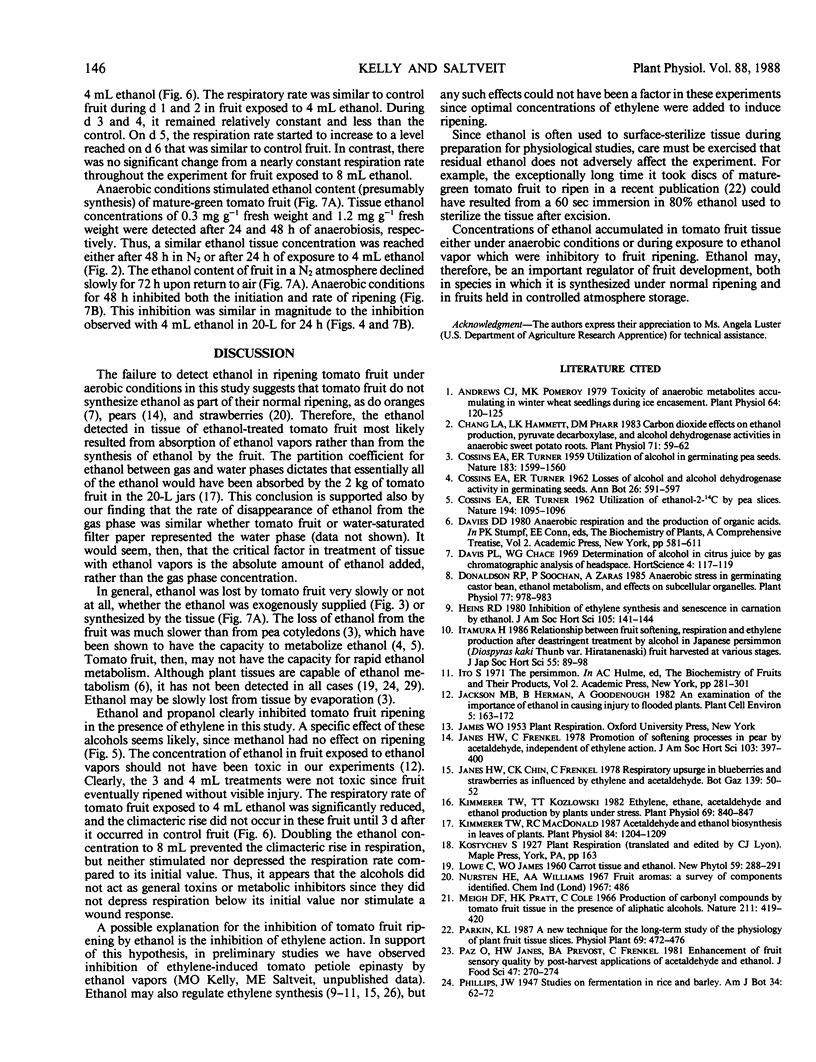Abstract
Tomato (Lycopersicon esculentum Mill. var Castlemart) fruit ripening was inhibited by tissue concentrations of ethanol that were produced by either exposure to exogenous ethanol vapors or synthesis under anaerobic atmospheres. Ethanol was not detected in aerobically ripened tomato fruit. Ripening was not inhibited by exposure to methanol at an equivalent molar concentration to inhibitory concentrations of ethanol, while ripening was slightly more inhibited by n-propanol than by equivalent molar concentrations of ethanol. The mottled appearance of a few ripened ethanol-treated fruit was not observed in n-propanol-treated fruit.
Full text
PDF




Selected References
These references are in PubMed. This may not be the complete list of references from this article.
- Andrews C. J., Pomeroy M. K. Toxicity of Anaerobic Metabolites Accumulating in Winter Wheat Seedlings during Ice Encasement. Plant Physiol. 1979 Jul;64(1):120–125. doi: 10.1104/pp.64.1.120. [DOI] [PMC free article] [PubMed] [Google Scholar]
- Chang L. A., Hammett L. K., Pharr D. M. Carbon dioxide effects on ethanol production, pyruvate decarboxylase, and alcohol dehydrogenase activities in anaerobic sweet potato roots. Plant Physiol. 1983 Jan;71(1):59–62. doi: 10.1104/pp.71.1.59. [DOI] [PMC free article] [PubMed] [Google Scholar]
- Donaldson R. P., Soochan P., Zaras A. Anaerobic stress in germinating castor bean, ethanol metabolism, and effects on subcellular organelles. Plant Physiol. 1985 Apr;77(4):978–983. doi: 10.1104/pp.77.4.978. [DOI] [PMC free article] [PubMed] [Google Scholar]
- Goodenough-Trepagnier C., Tarry E., Prather P. Derivation of an efficient nonvocal communication system. Hum Factors. 1982 Apr;24(2):163–172. doi: 10.1177/001872088202400202. [DOI] [PubMed] [Google Scholar]
- Kimmerer T. W., Kozlowski T. T. Ethylene, Ethane, Acetaldehyde, and Ethanol Production By Plants under Stress. Plant Physiol. 1982 Apr;69(4):840–847. doi: 10.1104/pp.69.4.840. [DOI] [PMC free article] [PubMed] [Google Scholar]
- Kimmerer T. W., Macdonald R. C. Acetaldehyde and ethanol biosynthesis in leaves of plants. Plant Physiol. 1987 Aug;84(4):1204–1209. doi: 10.1104/pp.84.4.1204. [DOI] [PMC free article] [PubMed] [Google Scholar]
- Kingsbury A. C., Frost F., Cookson W. O. Dysgerminoma, gonadoblastoma, and testicular germ cell neoplasia in phenotypically female and male siblings with 46 XY genotype. Cancer. 1987 Jan 15;59(2):288–291. doi: 10.1002/1097-0142(19870115)59:2<288::aid-cncr2820590219>3.0.co;2-n. [DOI] [PubMed] [Google Scholar]
- Nursten H. E., Williams A. A. Fruit aromas: a survey of components identified. Chem Ind. 1967 Mar 25;12:486–497. [PubMed] [Google Scholar]


